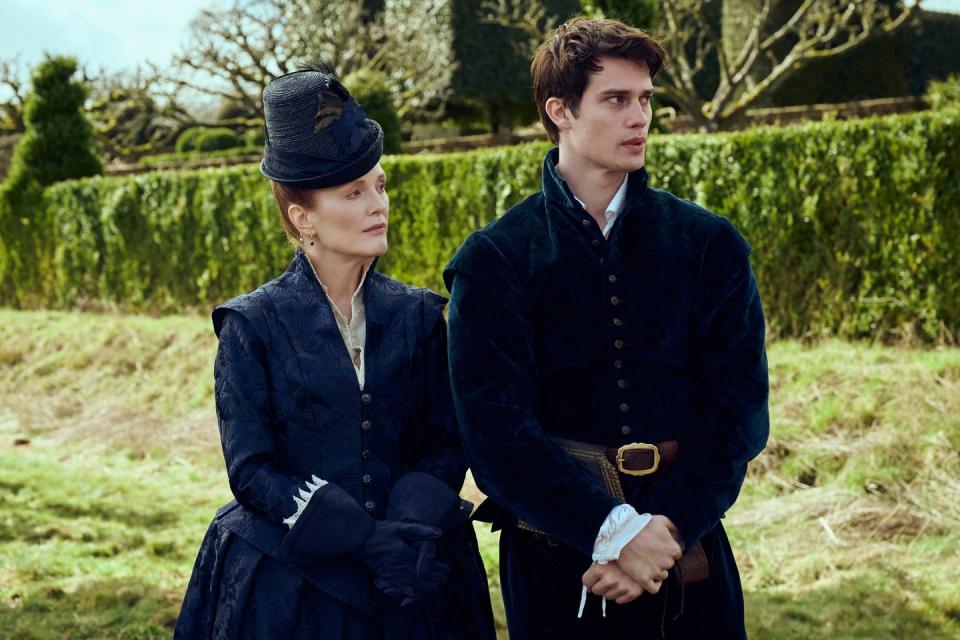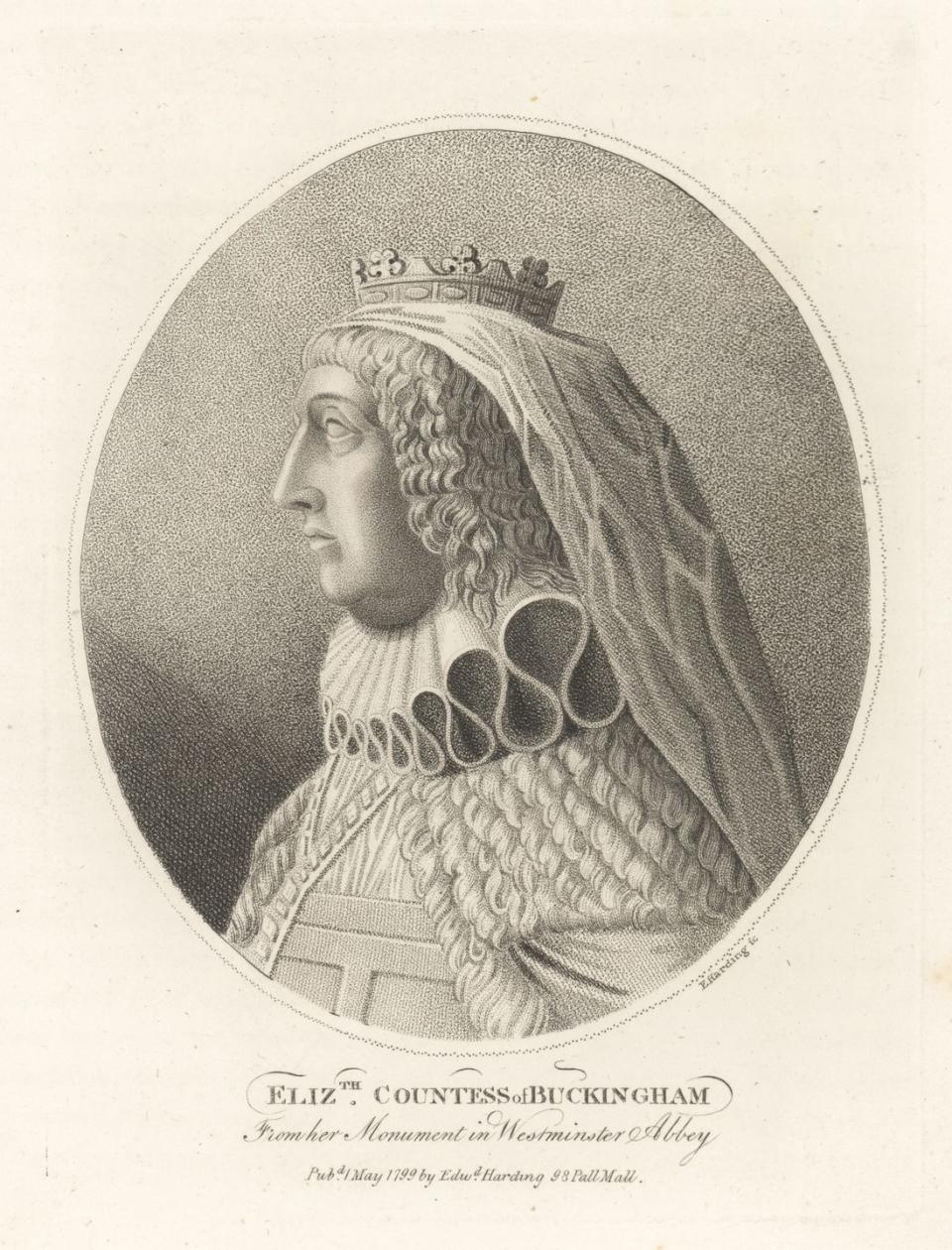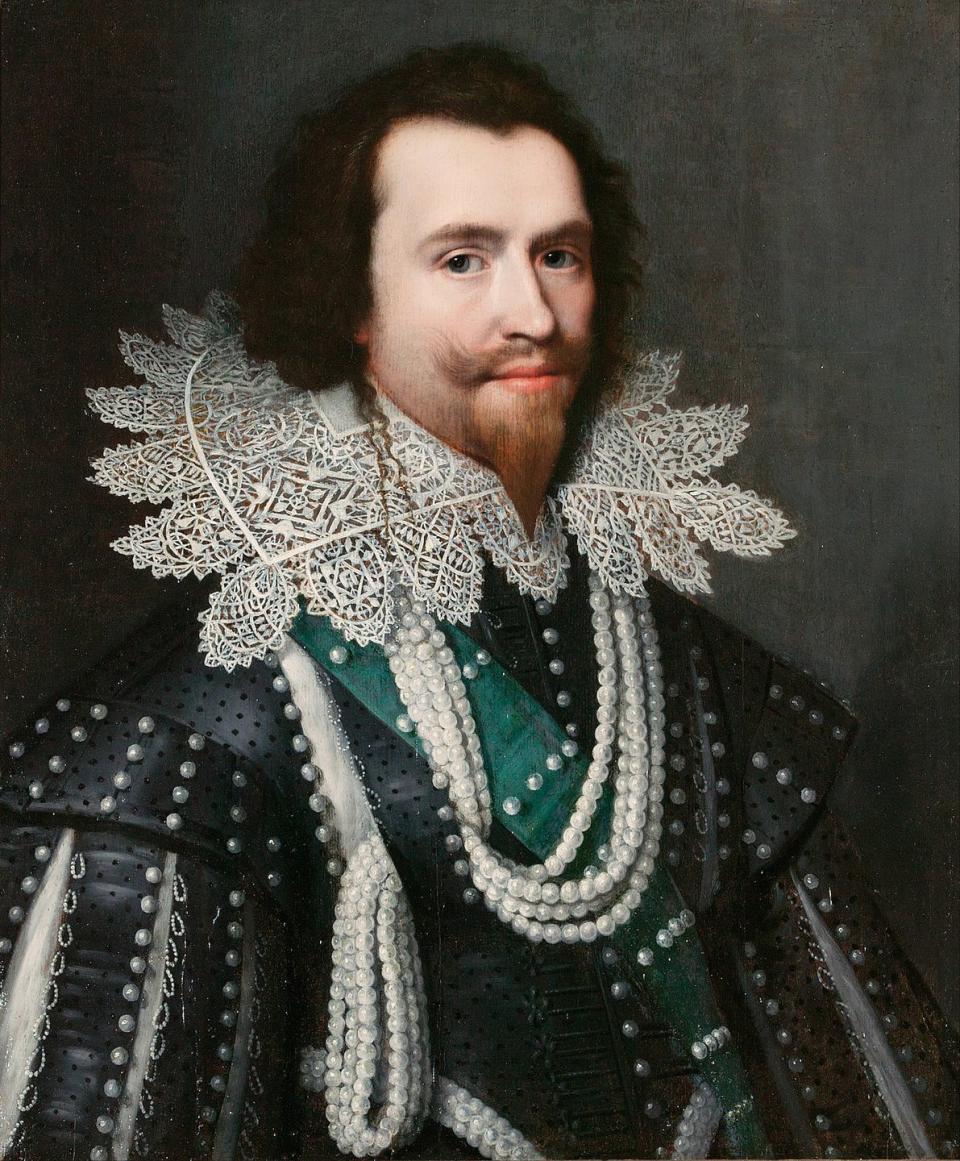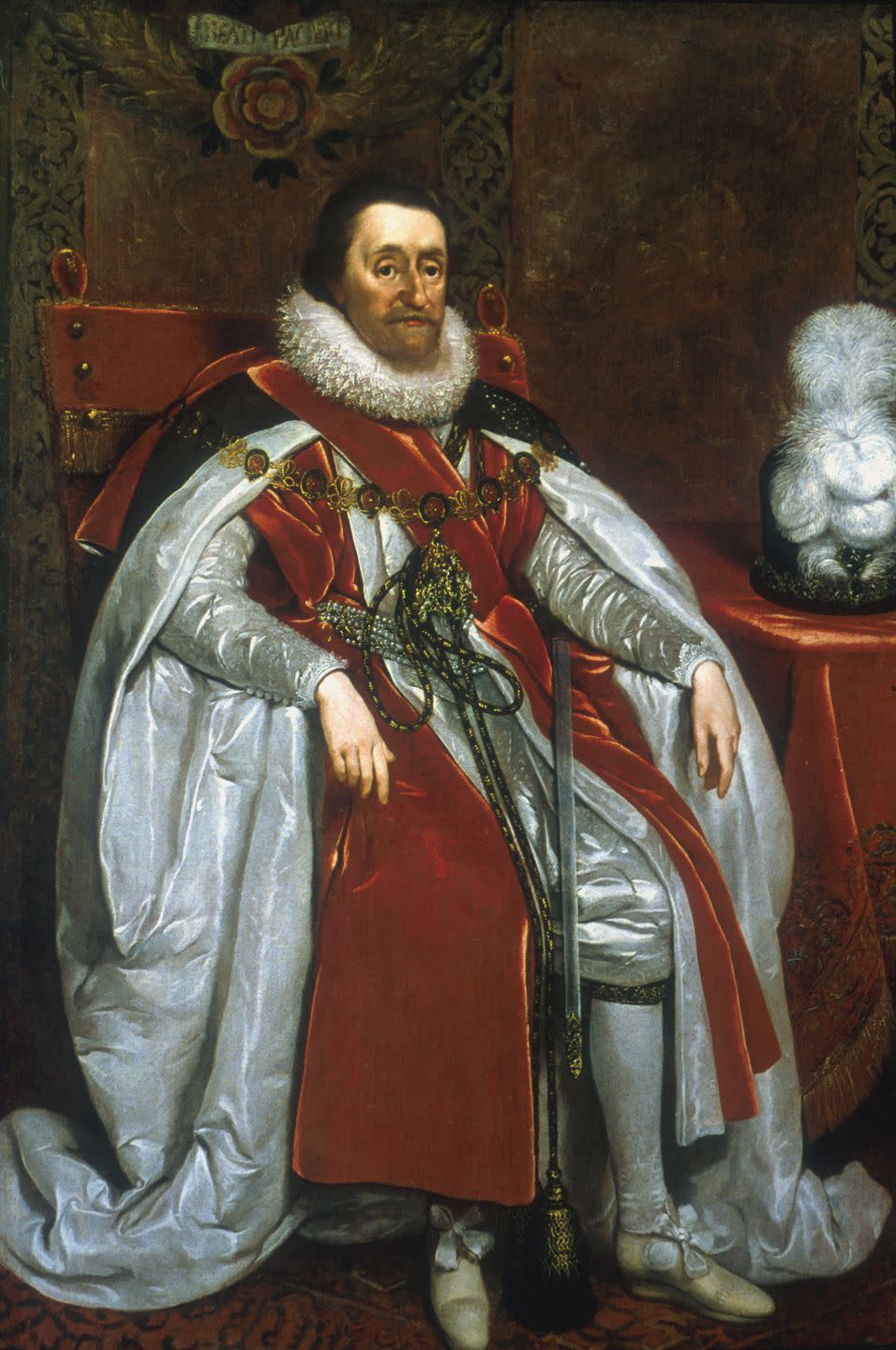Mary & George true story: What happened to Mary Villiers and George Villiers?
- Oops!Something went wrong.Please try again later.
- Oops!Something went wrong.Please try again later.
The new Sky drama Mary & George tells the story of how power-hungry Mary Villiers, played by Julianne Moore, and her honeytrap son George, played by Nicholas Galitzine, hatched a plan to climb to the upper echelons of society.
The Jacobean-era period piece sees the mother-son duo enter the royal court of King James VI and I and latch onto power and influence by hook or by crook.
The drama is based on Benjamin Woolley’s book The King’s Assassin: The Fatal Affair of George Villiers and James I and recounts George's unlikely ascent from little-known member of the gentry to gentleman of the royal bedchamber in 1615. But if the book's title weren't hint enough, it doesn't end particularly well.
Given that there is a very-much-true story behind the provocative seven-parter, how much does the drama adhere to the real history of Mary and her son George?

What happened to Mary Villiers?
Compared to George, there's a significant lack of historical detail available on the real Mary Villiers and her life. But here's what we do know.
Mary, who went on to become Countess of Buckingham, was as formidable a woman in life as in the drama and saw her son's potential.
Her husband George Villiers senior died suddenly in 1606, leaving Mary and her four children with little. Despite being strapped for cash, she scraped together the funds to send George to the French court.
There, he learnt to dance, fence and speak French: staples for English high society in the early 1600s. Meanwhile, Mary remarried widower Sir William Rayner. She would later marry a third time, to Sir Thomas Compton.

Upon George's return, she decked her son out in the correct wardrobe and sent him to the English court to schmooze. Which indeed he did and very successfully, as the duo rose up the ranks of society, gaining power and influence as they went. She became Countess of Buckingham in 1618.
Then things took a turn for the worse. In 1625, Mary argued with the King's physician about how the monarch should be treated. She was so influential that said physician was booted out of the royal court. Woolley's book makes a powerful case for the argument that James was poisoned by the pair.
Three years after the King’s death, George was assassinated – but more on that below. His mother had such a strong premonition of his death that she was said to be quite calm when she was told of it, according to Westminster Abbey's commemoration.
Mary died four years after her son in 1632. She was buried a few days later in Westminster Abbey.
What happened to George Villiers?

We slightly spoiled bits of George's story there, in that it didn't end with him and the king dashing off into the sunset, but here is the shading around that sketchy outline.
There's significantly more documentation about George's life than his mother's, which may be on account of the fact he was so close to the king.
George Villiers was born in Brooksby, Leicestershire, on 28 August 1592 and once he had acquired that French education, he first captured the king's notice at a hunt in Apethorpe, Northamptonshire, according to Tatler (NB: they weren't there at the time, we hasten to add).
Godfrey Goodman, who became the Bishop of Gloucester, wrote of George at the time that he was "the handsomest bodied man in England; his limbs so well compacted, and his conversation so pleasing, and of so sweet a disposition."
From there, his rise through the royal ranks was meteoric, but all the while it was believed he was having a sexual relationship with the king.
James bestowed titles and peerages on George, first knighting the Gentleman of the Bedchamber in 1615, then making him the first Duke of Buckingham in 1623. This made him the only duke who was not a member of the royal family.

George went on to marry the wealthy heiress Lady Katherine Manners, which was a controversial union in the royal court. Some believed Mary had trapped Katharine into going through with the marriage, after she was forced to spend a night under the same roof as George – very much not the done thing at the time, as it tarnished her reputation for other suitors. The pair married in 1620.
Meanwhile, the king was said to have become utterly besotted with George. According to Historic Royal Palaces documents, he wrote to George in a letter in 1623: "God bless you, my sweet child and wife, and grant that ye may ever be a comfort to your dear father and husband."
George replied, writing: "I naturally so love your person, and adore all your other parts, which are more than ever one man had."
After a decade at his side, the king died in March 1625. The circumstances were immediately labelled murky, with George's numerous enemies accusing him of poisoning the king.
His motive? Woolley argues ambition and a frustration at the king's passive approach to government prompted George to kill. But it may also have been an accident, after a quack doctor's remedy was given to a king already weakened from a malarial attack.
Parliament launched an investigation into George's possible criminality, but the charges ultimately never led anywhere. Still, George managed to cling to power, becoming a close confidant of James’ son and successor, Charles I.
It wasn't enough to protect him. In 1628, on the evening before he was set to lead an expedition for the relief of La Rochelle in France, George was stabbed to death by John Felton. Felton was an army officer who felt he'd been overlooked for a promotion by the Duke.
Charles I ordered George's burial in the Westminster Abbey chapel, an honour which had previously been reserved for those of royal descent, but, to prevent an uproar, did so with little ceremony. George still has a white marble monument with an effigy in the chapel of St Nicholas in Westminster Abbey.
Mary & George airs on Sky Atlantic and NOW from March 5.
You Might Also Like

